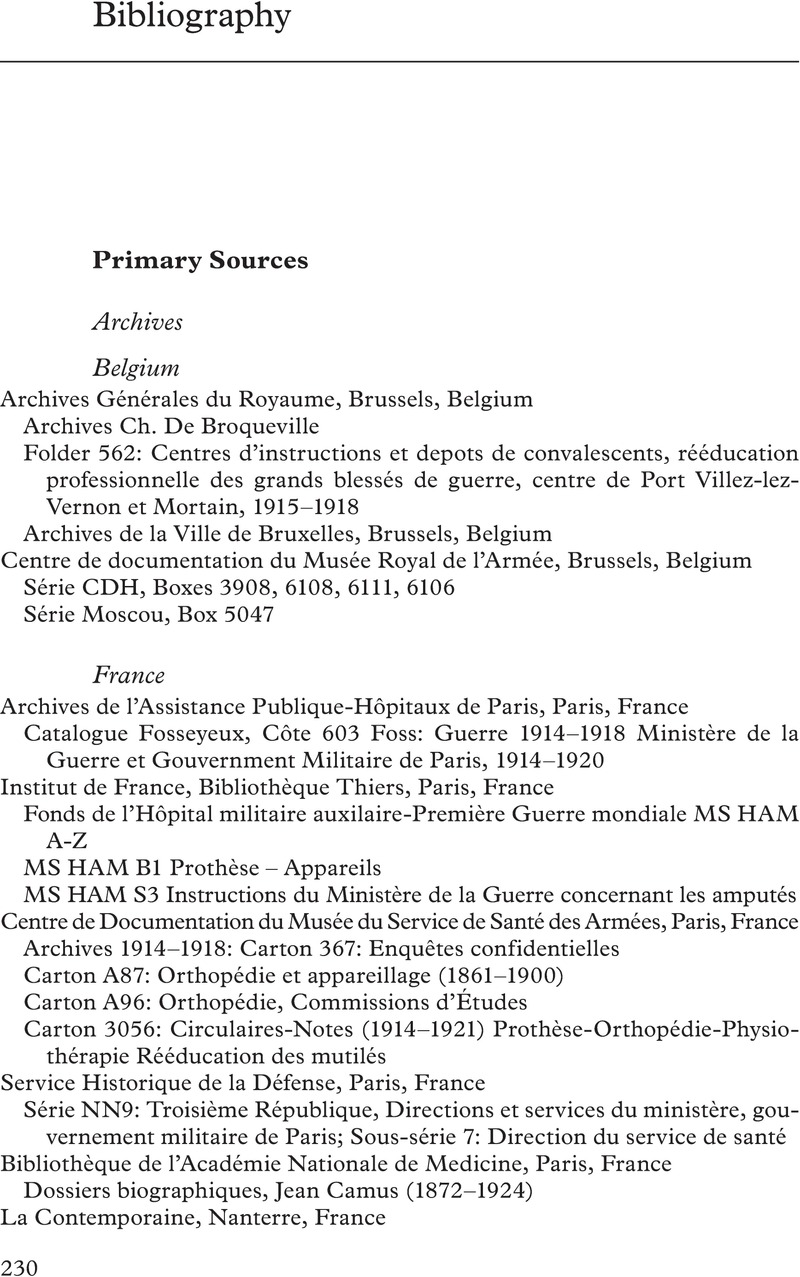Book contents
- Bodies of Work
- Studies in the Social and Cultural History of Modern Warfare
- Bodies of Work
- Copyright page
- Dedication
- Contents
- Figures
- Tables
- Acknowledgements
- Introduction: Whole Nations in Arms
- 1 The Gospel of Rehabilitation
- 2 A Great Army of Industrial Soldiers
- 3 A Duty Incumbent on All Allied People
- 4 He Marches Off On an Entente Leg
- 5 A Charge Almost If Not Quite as Sacred
- Conclusion: The Right to Rehabilitation
- Bibliography
- Index
- References
Bibliography
Published online by Cambridge University Press: 20 October 2022
- Bodies of Work
- Studies in the Social and Cultural History of Modern Warfare
- Bodies of Work
- Copyright page
- Dedication
- Contents
- Figures
- Tables
- Acknowledgements
- Introduction: Whole Nations in Arms
- 1 The Gospel of Rehabilitation
- 2 A Great Army of Industrial Soldiers
- 3 A Duty Incumbent on All Allied People
- 4 He Marches Off On an Entente Leg
- 5 A Charge Almost If Not Quite as Sacred
- Conclusion: The Right to Rehabilitation
- Bibliography
- Index
- References
Summary

- Type
- Chapter
- Information
- Bodies of WorkThe First World War and the Transnational Making of Rehabilitation, pp. 230 - 251Publisher: Cambridge University PressPrint publication year: 2022

